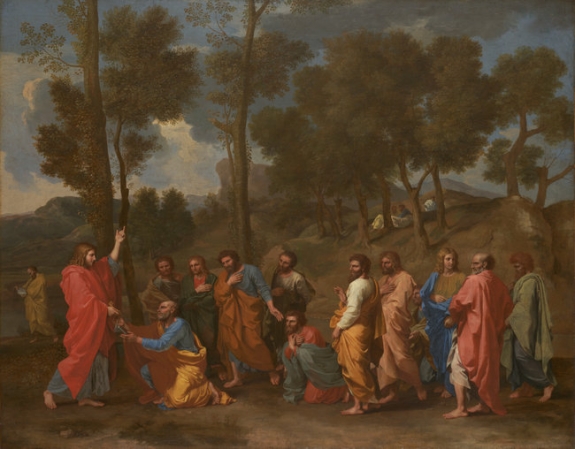By all accounts, Nicolas Poussin’s “Sacrament of Ordination (Christ Presenting the Keys to Saint Peter)” should have been a winner. Executed between 1636 and 1642, the painting is part of the artist’s groundbreaking series depicting the seven sacraments. It is in perfect condition and has a pristine provenance. So why was there not a single bidder interested in the painting at a Christie’s auction in London last December?
Some experts said its estimate of $24.3 million to $31 million was too high. Others said that such a specialized painting should not have gone to auction in the first place but should have been sold privately. The trustees of Belvoir Castle had put it on the market to raise money for the restoration of the castle and grounds, some 120 miles north of London.
What few people realized was that the Kimbell Art Museum in Fort Worth was quietly keeping tabs on the painting. “We were watching it closely,” said Eric M. Lee, the Kimbell’s director. “But December was not the right time for us to buy it.”
When it didn’t sell, he added, he “felt it was too important a painting to pass up.” So Mr. Lee approached the museum’s trustees “to see if we could afford it.”
This summer the institution finally made a deal, paying $24.3 million — Christie’s low estimate — without the auction house’s steep buyer’s premium. Robert Holden, a fine-art agent based in London, and George Wachter, head of Sotheby’s old master painting department worldwide, represented the Kimbell.
The painting has a particularly rich past. It is from the first set of “Seven Sacraments,” which was commissioned by the Roman collector Cassiano dal Pozzo. (A second set, painted between 1644 and 1648, was commissioned by the French collector Paul Fréart de Chantelou and belongs to the Duke of Sutherland, who has lent the paintings to the National Galleries of Scotland.)
The first series was well known among connoisseurs throughout Europe. When Sir Robert Walpole tried to buy it for his collection at Houghton Hall in England, the sale was blocked by the pope, who refused to let the paintings out of the country. But in 1785, the fourth Duke of Rutland stepped in and was able to buy them from descendants of dal Pozzo. He is said to have made copies of the paintings so the originals could be sneaked out of Italy.



